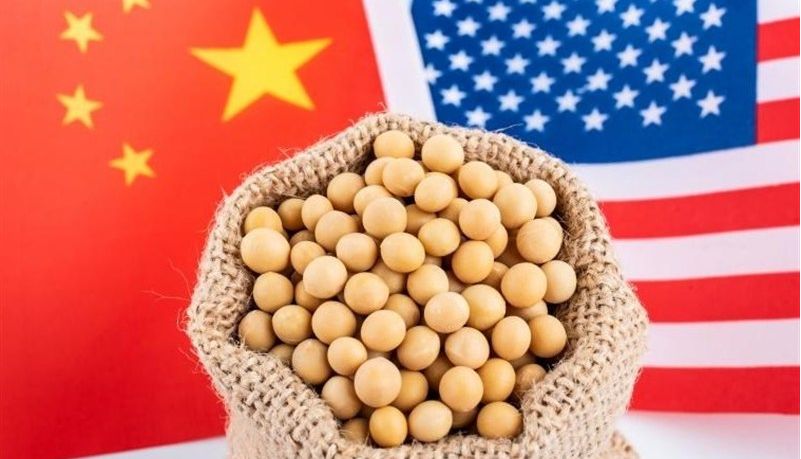Chinese, US soybean market participants remain skeptical about US-China talks

Chinese and US soybean complex market participants continued to closely monitor the developments of trade negotiations between the US and China, withtrade sources expressing skepticism and mixed opinions about it on Oct. 17.
“I’m leaning toward pessimism. China is unlikely to take the initiative to ease tensions, as it emphasizes reciprocity, believing China will maintain a firm stance in negotiations, while the US is balancing its intentions to reach an agreement with China while keeping China in check. Resulting in both sides having different dilemmas,” a soybean trader based in China said, suggesting that there could be ongoing back-and-forth in the process.
Other trade sources based in China also expressed similar sentiments, with one of the buyers citing that they were “not holding high hopes.”
In the US, President Donald Trump said on Oct. 17 during a TV interview that the tariffs on China were “not sustainable,” and that he still plans to meet Chinese President Xi Jinping in a few weeks.
“I would say there is the expectation that Trump should find a way to end the trade war [in that meeting],” Brady Holst, vice chairman and at-large director of the Illinois Soybean Association, told Platts, part of S&P Global Commodity Insights. “But farmers don’t expect the meeting to be the end of the trade war in reality. It’s difficult to say how long this will go on. It could be Nov. 5 if the Supreme Court decides the tariffs aren’t legal.”
The CEO of the US Soybean Export Council, Jim Sutter, said he remains optimistic that both countries will find a solution, given that everyone understands the importance of the US-China soybean trade.
“Currently, the status of China-US soy trade is a lose-lose situation: Chinese importers and ultimately consumers are paying a high price, and US soy farmers are selling cheaply due to the de facto trade blockade,” he told Platts via email. “I have every confidence that negotiators from both sides will find a workable solution, both for the short and long-term, that recognizes the criticality of the China-US soy relationship.”
The American Soybean Association did not reply to a request for comment, but after the possibility of a Trump-Xi Jinping meeting stalled in the second week of October, its president, Caleb Ragland, said that this was “extremely disappointing.”
“Trade wars are harmful to everyone,” Ragland said in a release on Oct. 10. “And these latest developments are deeply disappointing at a moment when soybean farmers are facing an ever-growing financial crisis. ASA hopes that talks can be put back on track to restore markets and trade relationships.”
China’s demand favors Brazil’s soybeans
Chinese buyers have remained absent from the US soybean imports during this year’s key harvesting period. Most buyers continued to procure beans from Brazilian and Argentine origins, even in the face of elevated premiums.
However, between the two South American origins, Chinese buyers and traders have pointed to stronger near-term demand for soybeans of Brazilian origin.
“Earlier, when CFR prices for Argentine-origin soybeans were low, [most crushers] had secured some supplies. The transactions that week alone likely involved old-crop soybeans, probably around 2.2 to 2.3 million mt,” a Chinese soybean buyer said.
“Recently, the overall Argentine-origin soybeans are not particularly cheap, [November shipment offer indications are] still around 230 cents/bu [over November (X) Chicago Board of Trade futures, basis CFR China]. At this price level, buyers are more inclined to purchase from Brazil instead, [which is around 298 cents/bu over Nov (X) CBOT],” added the same buyer.
According to data from Brazil’s General Administration of Customs, the country has emerged as China’s largest supplier of soybeans, significantly increasing its exports from 38 million tons in 2016 to 75 million tons in 2024. This growth accounts for 71.4% of China’s total soybean imports.
In contrast, soybean imports from the US have been declining. They peaked at 34 million tons in 2016 but have decreased to 22 million tons in 2024.
Platts assessed the soybean CFR China M1 basis at 274 cents/bushel over the Chicago Board of Trade January (F) contract on Oct. 17. The soybean CFR China M1 flat price was assessed at $479.32/metric ton.
Meanwhile, SOYBEX FOB New Orleans for December shipment was assessed at $407.03/mt on Oct. 17, up $3.40/mt from Oct. 16. The outright price for CIF New Orleans for October shipment was assessed at $402.53/mt, up $3.22/mt from Oct. 16.
In Brazil, Platts assessed the SOYBEX FOB Santos soybean contract for December loading at $440.03/mt on Oct. 17, $3.22/mt higher than the previous assessment.
Read also
Official Release – December 17th! Crop & Price Navigator 2026/27
Ukraine’s harvest nears completion: Total grain output exceeds 56 mln tons
Wheat heads for worst week since June on global oversupply
‘Soybean GPT’ lands South Korea’s agriculture ministry in awkward situation
Thailand purchases 65 thsd tons of Argentine feed wheat
Write to us
Our manager will contact you soon



